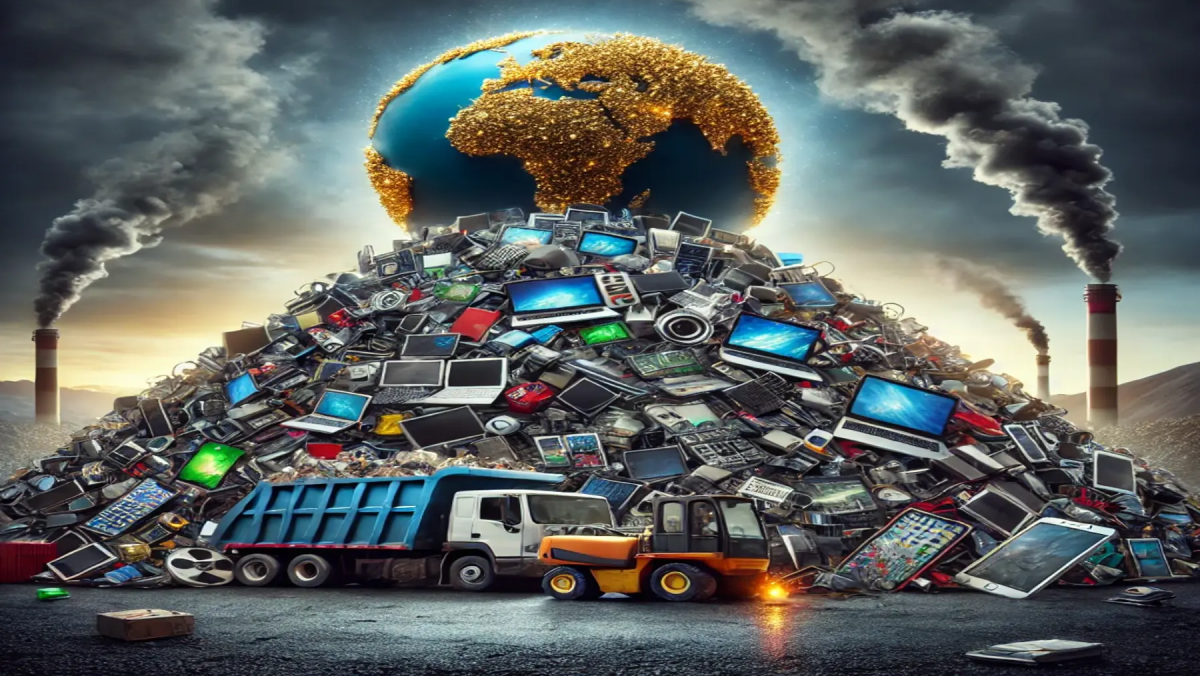Now Reading: Only 22% of Global E-Waste Recycled Shocking Truth Behind Millions Dumped
-
01
Only 22% of Global E-Waste Recycled Shocking Truth Behind Millions Dumped
Only 22% of Global E-Waste Recycled Shocking Truth Behind Millions Dumped

Table of Contents
The world is drowning in electronic waste. From old smartphones and broken laptops to outdated televisions and discarded batteries, e-waste is piling up faster than ever before. But the truly alarming fact? Only 22% of global electronic waste is properly recycled, according to the latest international reports.
This low recycling rate has sparked concerns among environmental experts, governments, and tech companies alike. As the demand for electronic gadgets rises year after year, so does the volume of waste created when these devices are thrown away.
What Is E-Waste?
Global Electronic waste, commonly known as e-waste, includes any discarded electrical or electronic devices. These can range from personal gadgets like phones and tablets to larger appliances like refrigerators, air conditioners, and washing machines.
Many of these items contain valuable materials such as gold, silver, copper, and rare earth metals. At the same time, they also hold hazardous substances like lead, mercury, and cadmium, which can pollute soil, air, and water if not disposed of properly.
The Scale of the Problem
A recent report from the Global E-waste Statistics Partnership (GESP) reveals that the world generated over 62 million tonnes of e-waste in 2022. That’s equivalent to throwing away 1,000 laptops every second. However, only 22% of that waste was officially collected and recycled.
The rest? It either ended up in landfills, was incinerated, informally processed, or simply forgotten in drawers and storerooms across the globe.
If current trends continue, experts predict global e-waste could reach 82 million tonnes per year by 2030. This growing mountain of discarded electronics poses major environmental, health, and economic risks.
Why Is the Recycling Rate So Low?
Several factors contribute to the shockingly low e-waste recycling rate:
- Lack of Infrastructure: Many countries, especially in developing regions, lack formal systems for e-waste collection and recycling.
- Public Awareness: Many consumers are unaware of how or where to recycle their electronics responsibly.
- Complex Disassembly: Modern gadgets are designed to be compact and sleek, making them hard to take apart and recycle.
- Informal Recycling: In some parts of the world, informal or illegal recycling methods are common. These unsafe practices often involve burning or acid baths, which harm both workers and the environment.
Environmental and Health Risks
Improper e-waste disposal can have toxic consequences. For instance, burning old circuit boards releases dangerous fumes, while dumping batteries in landfills can contaminate groundwater with chemicals.
Communities near informal recycling sites often suffer from respiratory problems, skin diseases, and even neurological issues, especially among children. In some countries, e-waste dumping grounds have become pollution hotspots, putting millions at risk.
The Economic Cost of Wasted Resources
It’s not just about environmental harm. The failure to recycle e-waste also means losing out on valuable materials. According to the United Nations, the global economy misses out on nearly $60 billion worth of recoverable raw materials each year due to improper e-waste disposal.
Recovering precious metals from e-waste is not only environmentally friendly but also more energy-efficient than mining them from the earth.
What’s Being Done?
Thankfully, some positive steps are being taken to improve global e-waste management:
- Government Action: Countries like Germany, South Korea, and Japan have introduced strong e-waste recycling laws and collection systems. In the European Union, manufacturers are required to take back old electronics.
- Producer Responsibility: Many companies, including Apple, Dell, and HP, have started offering recycling programs and trade-in options to reduce their e-waste footprint.
- Consumer Education: Campaigns across the world are encouraging people to donate, sell, or recycle their unused gadgets instead of throwing them away.
- Tech Innovations: New recycling technologies are making it easier to extract valuable materials from electronic waste without harming the environment.
What Can You Do?
Everyone has a role to play in solving the e-waste crisis. Here are a few simple steps:
- Donate or sell devices that still work.
- Use devices longer by repairing instead of replacing.
- Recycle through certified centers or manufacturer take-back programs.
- Avoid hoarding old electronics get them to proper disposal channels.
Consumers, manufacturers, and governments must work together to improve recycling systems, increase awareness, and create a more circular economy for electronics.
The Road Ahead
While the 22% recycling rate is troubling, it’s also a wake-up call. With stronger policies, smarter product design, and better public participation, the world can improve how it handles electronic waste.
More than just a technical problem, e-waste is a social and environmental challenge that reflects our habits, our choices, and our priorities. The next time your phone breaks or your laptop slows down, think twice before tossing it in the trash.
Read More:- Deyaar’s Latest Announcement Shakes Up the UAE Property Market






















